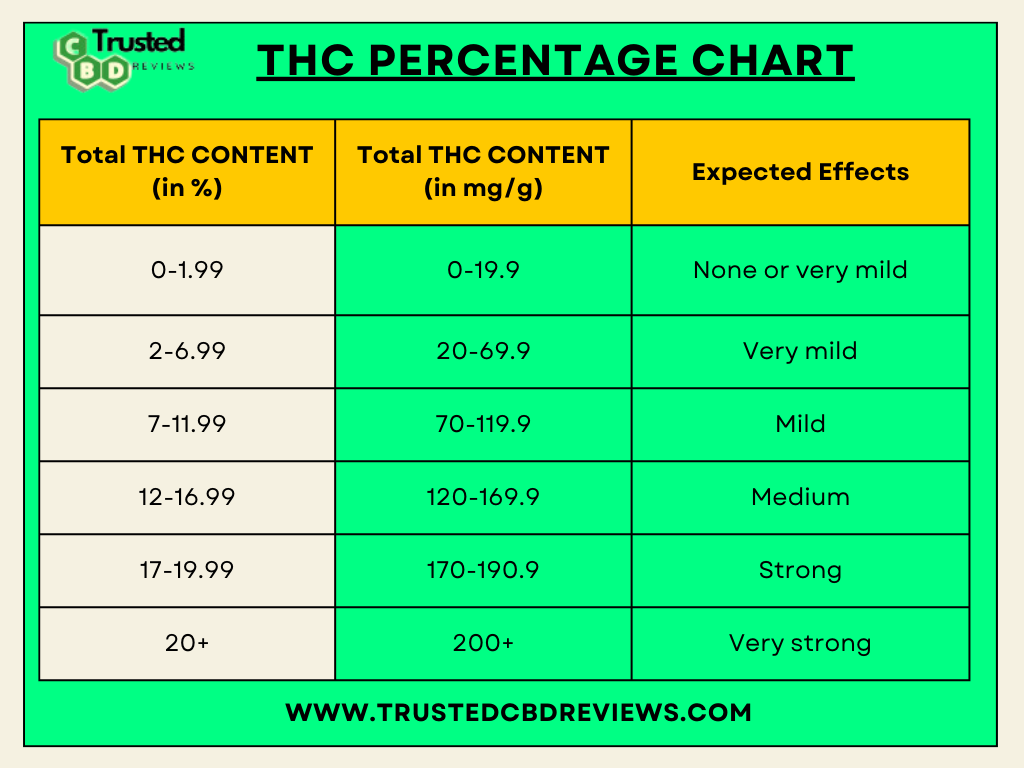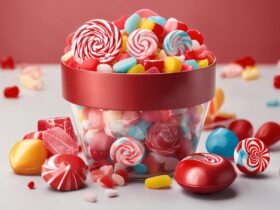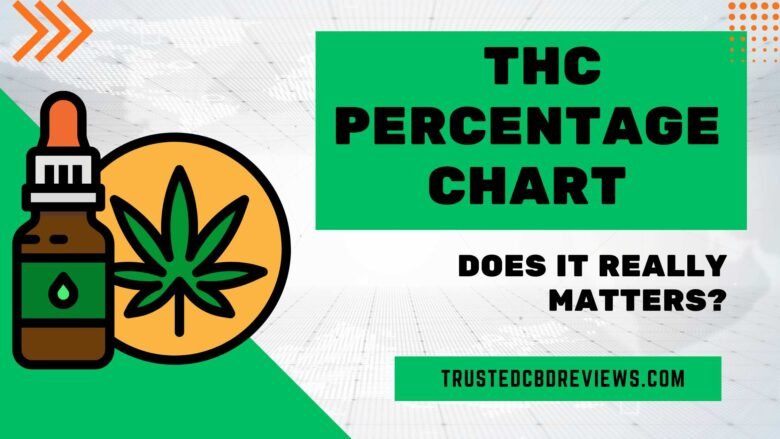The cannabis industry has undergone a major transformation recently, thanks to the legalization of medical and recreational use in many regions worldwide. This development has led to an increase in the number of cannabis products available, each with a unique combination of cannabinoids. For both customers and cannabis experts it is essential now to understand the THC concentration in the cannabis products. However, you can read here in this guide about the THC percentage chart to learn about how important it is to know the THC percentage, its implications, and how it can affect your cannabis experience.
What is THC?
THC, sometimes referred to as tetrahydrocannabinol, is the primary psychoactive component in marijuana. It binds the brain and central nervous system receptors, causing euphoria and perception change. The effects of THC are dose-dependent and vary from person to person. Short-term effects include impaired coordination and memory, increased heart rate, and anxiety among others. However, there are several medical uses for THC such as appetite stimulation and pain relief.
It’s significant to note that there are regional differences in the legality of THC, with some nations allowing THC for recreational or therapeutic use while maintaining rigorous prohibitions. Its effects and legal status must be understood to consume responsibly.
Why Does THC Percentage Matter?

Source: TrustedCBDReviews
After understanding what THC percentage is all about let’s move on to answering the big question: Does THC percentage matter?
1. Personal Preference
The importance of THC percentage ultimately depends on personal preference. Some users will prefer products with higher levels of THC for a stronger “high” while others will choose lower percentages for a milder effect. Individual choice is what matters most.
2. Medical Considerations
It’s important to consider the amount of THC when using marijuana for medicinal purposes because certain conditions require specific percentages of THC for effective management. A healthcare professional or budtender can assist you in finding out what percentage is best suited for your needs.
3. Balanced Products
The value of the level of THC alone does not define the overall quality or experience of marijuana as many people love products that contain other cannabinoids like CBD(cannabidiol) along with various terpenes.
4. Avoiding Overconsumption
High THC content in marijuana may lead to impaired coordination, psychosis, or anxiety hence responsible consumption limits are essential.
How to Read a THC Percentage Chart?
Now that you have a fundamental understanding of THC percentages, let’s explore how to read a THC percentage chart effectively. The THC percentage chart provides useful information regarding the THC level of cannabis products, allowing customers to make more informed decisions.
- Check the THC Percentage
Look at this number which is usually written prominently on either the package or label as it tells you how much THC is contained relative to the whole product.
- Consider Your Tolerance
Check your tolerance level first before making any decision especially if you are a new user as high THC levels could overwhelm you but experienced users may require high levels for potency.
- Understand the Product Type
Different types of cannabis products have various levels of THC such as flowers, extracts, edibles, tinctures, etc.; make sure you understand this factor as well as your intended result before making a purchase.
- Read the Fine Print
Certain information about products e.g. strain name; terpene profile; and cannabinoid profile might be found in some THC percentage charts showing percent composition that give insight into the product’s overall effects.
Does a Higher THC Percentage Mean Better Quality?
The psychoactive substance THC is what gives marijuana users a blissful high. Many customers think a product with a higher THC content is of a higher caliber. But this presumption might be false due to the following reasons:
1. THC Content vs Potency
While there is the truth behind higher content translating into higher potency, not all customers necessarily see that association between quality and quantity that way; potency is key but not always indicative of a good quality product every time.
2. Tolerance Effects
Users may develop tolerance over time when they consume high-THC products leading them to need more drugs thus increasing costs or side effects yet these people become more susceptible over time.
3. Entourage Effect
A variety of cannabinoids and terpenes in balance are frequently found in high-quality cannabis products. The entourage effect describes how these substances collaborate to produce a desired effect.
4. Health Considerations
Besides focusing on the complete experience rather than just the THC content, high-quality cannabis should prioritize user safety and well-being.
5. Personal Preferences and Diversity
Quality perception ultimately comes down to individual tastes where what one finds good quality another might not – this includes things like flavor/aroma/overall experience rather than just % THC alone.
Effects from Different Consumption Methods at Different Levels Of THC
THC, or tetrahydrocannabinol, determines cannabis’s potency and effects. Higher percentages often mean stronger effects for users. Generally, 5% THC is considered low potency, suitable for beginners or those seeking mild effects.
- Smoking
Smoking remains the most popular consumption method. It involves burning dried cannabis flowers, often in joints or pipes. Inhalation provides immediate effects, typically peaking within 30 minutes.
- Vaping
This method involves heating up rather than burning dried flowers so less combustion produces cleaner vapor – effects set in just like smoking.
- Edibles
Edibles, like cookies or brownies, infuse THC into food. Edible consumption is discreet and smoke-free. However, manifesting effects can last 1-2 hours longer than inhaled methods.
- Tinctures
Tinctures are alcohol-based cannabis extracts. Users place drops under the tongue for fast absorption. They provide precise dosing and onset in about 15-45 minutes.
- Topicals
Topicals, such as creams or balms, target localized relief. They’re applied directly to the skin. While they don’t offer psychoactive effects, they’re effective for pain or inflammation.
Conclusion
In conclusion, the THC percentage in cannabis products does matter, but its significance varies depending on individual preferences, medical needs, and desired effects. Understanding THC percentage is crucial for tailoring your cannabis experience, whether you seek a potent, high, therapeutic relief or a balanced blend of cannabinoids.
Reading THC percentage charts can empower consumers to make informed choices and enjoy cannabis responsibly. Responsible consumption and adherence to local regulations are essential for a safe and enjoyable cannabis experience.


















Leave a Reply